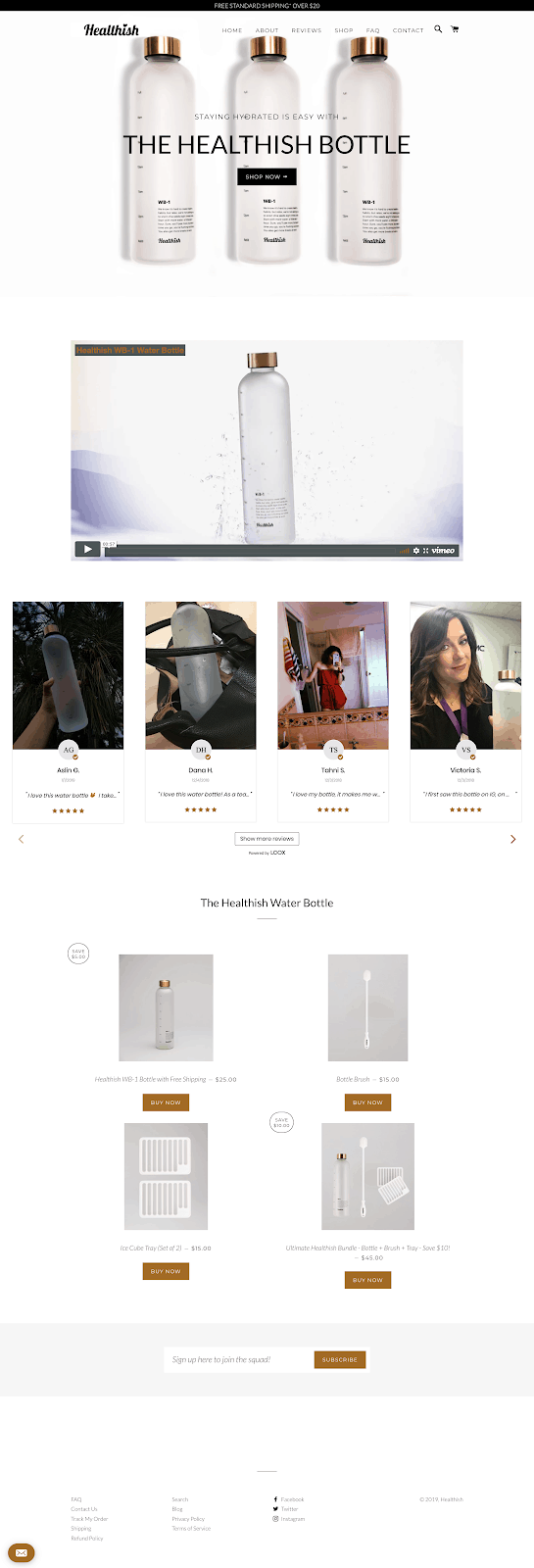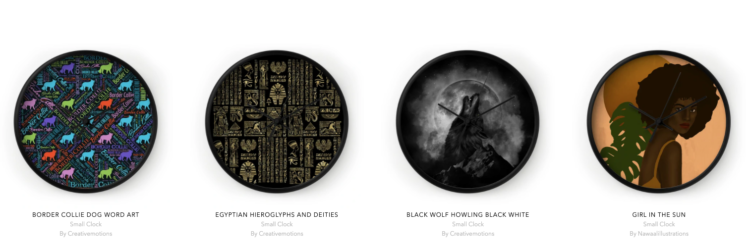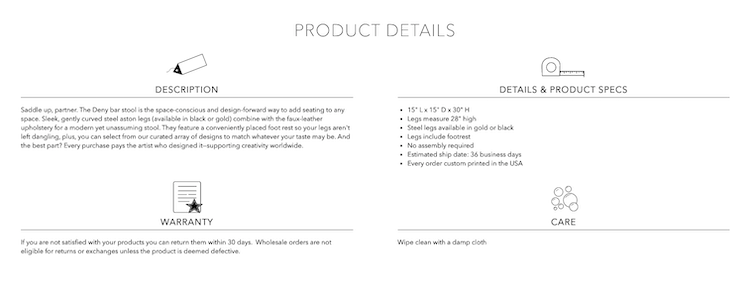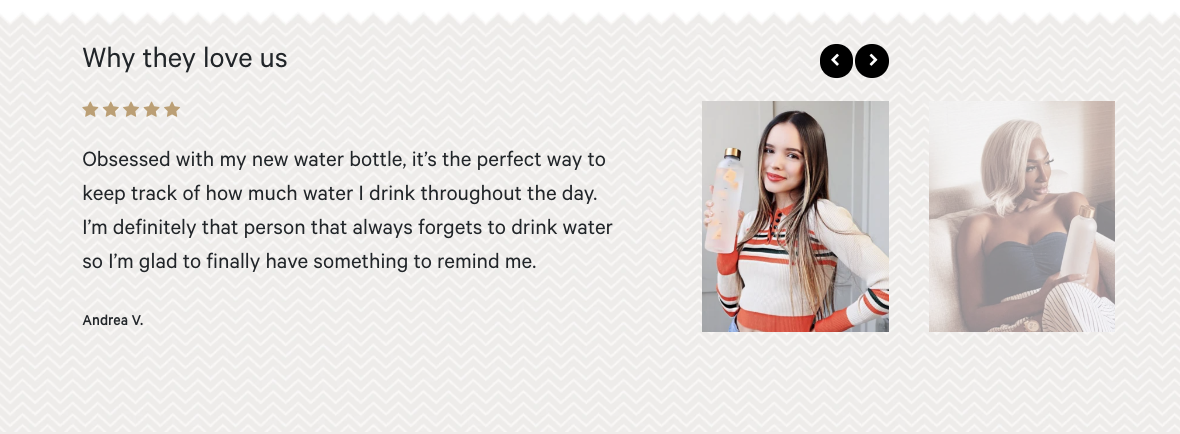For your Shopify store, sales funnels are key.
Over the past few years, ecommerce sales funnels have emerged as one of the fastest ways to get more customers, boost the value of every purchase, and sell more goods to every visitor.
And as an added bonus, it’s one of the best ways to acquire new customers.
The process of creating sales funnels has come a long way, too. Building a sales funnel used to take weeks, require tons of custom coding, and a whole team of developers. These days, thanks to a number of easy to implement sales funnel software tools, it’s now possible to create one in just minutes.
Yes, you read that right, minutes!
Shopify is one of the leading content management systems (CMS). It’s the go-to solution among many ecommerce store owners because it has an easy-to-use interface, simple integration with payment, shipping gateways, and more.
Shopify has risen among the ranks to dominate the CMS market. It’s taken over industry leaders like WordPress/Woocommerce and Magento in just a few years.
Editor’s note: This article was originally written by Rob Allen but has since been updated by Alisha Conlin-Hurd who has helped over 400 businesses across 120+ niches to generate leads and sales online. Alisha has worked for years in funnel creation and is an expert in her field.
In fact, it’s not just smaller ecommerce brands jumping on Shopify. Big companies too like Hasbro, Heinz, RedBull, and Kylie Cosmetics all call Shopify home.
A well-built built sales funnel on Shopify can be a powerful foundation to build your ecommerce business on. Unfortunately, the out-of-the-box product doesn’t allow for many common sales funnel features, like one-click upsells, order bumps, and even custom sales pages. Making it work takes some finesse.
In this post, we’re going to show you how to make Shopify and sales funnels work seamlessly together to boost customers and conversions for your ecommerce store. We’ll reveal the essential elements you need in place, share tips to make sure your store pages convert and give you advanced strategies for driving traffic to your funnel.
What Exactly is a Sales Funnel?
Before we dive into the nitty-gritty details of what your Shopify sales funnel should include, let’s get on the same page of exactly what a sales funnel is.
A sales funnel takes someone from traffic – a prospect, who might be interacting with your brand for the first time – and moves them through the buyer’s journey to become a customer.
Not having a sales funnel in place is like approaching a physical storefront for the first tune and realizing that you have no idea how to find anything. No guide nothing!
Now, imagine approaching the store and finding a friendly expert staff member show you exactly what you’re looking for. Not only that, but they also share current promotions and sales, discuss complementary items, and walk you through the exact steps (so there is zero room for confusion).
That’s the effect a well-constructed sales funnel can have on your ecommerce store.
If you imagine a person visiting your store’s homepage, a sales funnel would be:
- What drives the person to click through to the product page
- How that person adds the product to their cart (and how much)
- And finally, what happens when they get to the checkout
A sales funnel is the how and what made that process occur.
It’s called a funnel because the number of people at each step gets smaller and smaller, resembling an actual funnel like this:

The goal is to guide potential customers through the entire buying process—from first finding out about your business or product to buying it—as seamlessly as possible.
And when done right, a sales funnel can boost the value of every purchase in your store, allow you to profitably acquire new customers, and sell more goods to every visitor.
The key is that the ultimate goal is to take prospects on a journey toward making a sale.
Here’s how to build one for your Shopify store.
READ MORE: How to Build a Profitable Marketing Strategy
Step 1: Have a Product That People Actually Want
Making sure your product idea is rock solid is the most important part of a successful sales funnel. It’s the thing at the very bottom that gets people to pull out their wallets and buy.
The last thing you want is to introduce a bunch of leads into your business’s sales funnel, only to find out they don’t want the product you’re offering.
Many people don’t like to hear this tip. But the first and most critical element to a converting sales funnel is having a product that people actually want.
Make sure you ask yourself the important questions:
Does my product solve a “known” problem? If it does, then you need to ask yourself if your product is the solution that people want for that problem.
Let’s imagine your product is a water bottle that aims to reduce accidental leakage with a fancy high-tech bottle lid that also doubles as a clock and pedometer (it’s a super fancy lid!). Your product solves the problem people face (water bottle lids breaking) but did you stop to consider if there was a demand on the market for a clock/pedometer water bottle lid with a higher price point?
Maybe you need to rethink your product.
Study the reviews of competing products. You want to keep a close eye on compliments: what are they doing well that you can emulate in your product?
Even better, read the bad reviews. If lots of people are complaining that your competitor’s products are lacking in something, then that’s your target to aim for. Always make sure you’re looking for ways to improve your product.
It doesn’t matter how many tools, apps, and sales tricks you use if your products suck, it won’t sell. And it definitely won’t allow you to build a sustainable business.
At Foundr, we’re staunch believers in product research. We consider it to be a key part of any sales funnel’s success.
If you’ve had trouble selling your product in the past, it might be time for a hard look in the mirror to ask: Is my product idea actually good? Is this product something people actually want to buy?
So, what happens if you have a killer product that solves a known problem, but for some reason, no one is buying it?
If your certain your product rocks but your ecommerce store is seeing nothing but tumbleweeds, then you need to reposition your product.
For example, you’ve invented a brand new (legit) protein powder that’s optimized for body-builders prepping for a competition. Assess whether or not your marketing appeals to them. Are you targeting gyms known for body-building? Are you providing them with enough information about the ingredients?
Might be time for a rebrand!
Remember, starting over with a new product or rebranding isn’t a failure. It’s often smart business to pivot. Pivots have led to breakthroughs for some of the most recognized companies today.
If you have the go-ahead that what you’re doing is good, then you can move on to step two: Building a converting storefront.
READ MORE: Psychographics 101: Everything You Need to Know; How It’s Used in Marketing
Step 2: Build a Converting Storefront and Product Page
Once you have a product you know will sell (and that people actually want), it’s time to build the core pieces of your sales funnel—your converting storefront and product pages. This is how you’ll move people from the top of the funnel down to actually buying the product.
Your product page is the most important page on your website. It is where people will decide to buy, and essentially determines whether or not they will make a purchase.
We will get into this more later along with the specifics on building a good product page, but for now, we just want to drive home just how important it is.
If you get this right, your products can get in the hands of more customers, you’ll make more money on every sale, and you’ll have more profits as the store owner. If you get this wrong, you’ll be left scratching your head wondering, “Why won’t they buy?”
So, how do you know where your sales funnel currently stacks up? According to Shopify, the average conversion rate for an ecommerce store is around 2%.
But get this: A well-optimized store and product page can convert as high as 10%.
That means five times as many buyers for the same traffic to your storefront. Said another way, that’s 400% more money to you from the same number of visitors.
That’s the power that a well-crafted storefront and product pages can have on your sales funnel.
READ MORE: We Went From 0 to $50,000 in Sponsorships in 4 Weeks & How You Can Too!
Showcase the Product
When it comes to selling products on Shopify, consumers should never have to guess what the product looks like or how it’s used.
From the second they arrive at your store, they should be given a clear understanding of exactly what the product looks like and how it works.
Make sure you showcase the product clearly. No over-the-top graphics, no blurry photos, nothing that distracts the person from your product. A useful tool is to have a product video showcasing how to use it properly. Customers love to see products in action, and it helps to remove questions from the customer on how to use it.
For example, with Foundr CEO Nathan Chan’s site Healthish, notice how the first two things on the landing page are visuals of the water bottles and a video showing consumers using the product.

With your store, there should be no doubt in your visitor’s head what the product is and how it will benefit them.
Another example, check out Deny Designs and their clear product images:

Don’t forget to show images in context. If you’re selling children’s lunchboxes, show images of children carrying them to school. If you’re selling a beach towel, don’t show images of people using it after getting out of the shower. Context is everything.
Deny Designs does a good job of this by using images of their furniture in context:

Highlight Your Products’ Benefits
One of the fundamental truths of marketing is that people don’t buy features, they buy what those features will do for them (aka the benefits).
No matter what product you’re selling you should communicate the benefits clearly to your visitors.
Even with something as simple as Healthish’s water bottle, where you might suspect people to recognize the benefits of drinking water, you need to put those benefits in front of customers from the second they arrive at your site.
Notice how Healthish does it with their tagline: “Staying Hydrated Is Easy With The Healthish Bottle”

Deny Designs gives clear and concise information that a furniture or art customer may want to know. An informed customer is more likely to make a purchase, so don’t skimp on this step.

When you write your product’s copy, ask yourself if it clearly communicates (and resonates) with what the customer needs.
Paint a picture with your copy, connect with your customer, and make sure that you constantly ask yourself: why would my customer need to know this? And, is it necessary for them to read in order to make a sale?
READ MORE: How to Start a Podcast on a Budget
Leverage User-Generated Content (Social Proof)
One of the biggest marketing breakthroughs of the last century was understanding how much consumers are impacted by the actions of others.
Whenever we see other people doing something, like forming a line, liking a product, listening to a new song, we’re compelled to join in on the fun. This is called social proof and it can be a powerful element to work into your Shopify store pages.
Creating a bridge between real-life product use and what they see in your store can mean the difference between a sale and a missed opportunity.
According to a Nielsen Global Trust in Advertising report, 92% of consumers trust recommendations from peers and other users, above all other forms of advertising. Healthish does this by including photos of customers using the product right on their store homepage.

With Shopify, there are hundreds of tools and apps that make integrating user-generated content right into your store pages easily.
Another way to do this is to put the reviews you have right on the product page using apps like Yotpo and Bolt. Just like Amazon, Healthish showcases their 437 five-star reviews proudly:

Each of those reviews acts as a tiny bit of proof that it’s a brand worth trusting and a product worth buying.
Leverage Trust and Support
One of the reasons Amazon is the biggest ecommerce platform in the world is because consumers trust that Amazon will protect their data. But when you are selling products in your own store, consumers might be a little less confident, especially if this is their first time visiting.
And if you’re going to improve your conversion rates (read: convince consumers to pull out their credit card), you need to build elements of trust into your store’s design.
They also clearly display FAQs and how to contact their customer support team in the header of the site.

These additional measures can go a long way toward building trust with potential buyers and work wonders for your Shopify store’s conversion rates.
Offer Incentives On Your Landing Pages
Once customers make it to the product page, you should continue offering incentives to drive them to buy. You can do things like offering discounts for buying more, adding a free shipping threshold, or advertising a deal can push conversion rates higher.
In Healthish’s case, you can see they leverage both free shipping thresholds and “buy more, save more” deals to drive additional revenue and purchases from visitors.
Another example: Sites like Purple (the mattress company) are great at constantly advertising offers for new visitors to the site. For example, they’re currently advertising their “Fall Sale”.

And they have seasonal promotions like this running on their site almost all year.
No matter when you visit, you’ll find discounts, deals based on holidays, and more. It’s all done in the name of pushing the consumer to take action today.
READ MORE: 10 Instagram Growth Hacks For More Engaged Followers (Without Running Ads)
Deploy Apps and Tools to Boost Revenue
When you’re building your Shopify sales funnel, you don’t want to overcomplicate things by signing up for dozens of apps and tools.
That makes it harder to track the impact of any single tool. It also means you’ll have to remember to keep all of them up-to-date and make sure they’re not causing bugs for users.
That said, there are some simple tools that every Shopify store should have in place.
The biggest tool is your email because of its power to drive remarketing and an upsell tool because it increases the average order value. Email allows you to continue to market to customers who don’t buy, push them back to their carts, and offer sales to customers after they buy.
Since our product has been distributed so well, we’ve been able to develop brand recognition. As a result, many individuals search for our company on Google and land on our website. Our goal is to not only have them convert but have them opt into our email subscriber list.
In addition to email, upselling is a powerful way to maximize the value of every order on your site. Customers are more likely to add-on a low-cost item or two at checkout on a whim.
All in all, upsells are awesome because you’re making more “average order value” and more items per cart. It’s better for your company to have 10 people spend $10 than waiting for 100 people to spend $1. (Yes, that’s a simple example, but it paints a picture!)
Of course, there’s an infinite number of things you can add to your store to attempt to push your conversion rates higher. But these are some of the essential elements you need to have in place to maximize the conversions on your Shopify store.
Also, consider the convenience factor for your customers. If you’re selling a tablet device, anticipate complimentary needs and use them as an upsell.
Offer customers protective cases for the tablet, a stylus, or even insurance on the device (that’s what Apple does!).
And once you have proper add-ons in place, you’re ready for the next phase of building your sales funnel: turning on a traffic source. This is where you load up as many prospects as possible at the top of your funnel and let the converting assets work their magic.
READ MORE: 30 Expert Tips on How to Get 10k More Followers on Instagram
Step 3: Build Your Traffic Engine
Once you have the core pieces of a converting storefront and product page in place, it’s time to get people to actually see your products.
This would be the top portion of your sales funnel.
Not that we only touch traffic once we have the bottom of the funnel in place with a properly positioned/researched product and converting store pages to push people to buy.
The good news is by building a converting storefront first, you can confidently go out and buy traffic to your store. Some of the most effective traffic sources today include:
Facebook Advertising
Even though ad costs are rising and it’s getting more competitive, Facebook is still one of the most effective channels for acquiring new customers.
Pro tip: Don’t just turn to Facebook for buying cold traffic, use it for its remarketing capabilities.
As Calloway Cook, the founder of Illuminate Labs, says:
The combination of paid ads for cold traffic and remarketing efforts have been valuable for our brand. Our product pages are very well-optimized for conversions, so getting potential customers to view the page more than two times generates a sale significantly more frequently than most competitor sites.
In other words, one of Facebook’s most useful capabilities is bringing users back after they visit your site. It’s a simple sales funnel trick, but it works, and the goal of every sales funnel should be to get results without overcomplicating things.
READ MORE: 3 Ways to Create a Facebook Sales Funnel That Will Convert Customers on Autopilot
At Foundr, we literally wrote the playbook on using Instagram to grow your brand (so you might say we’re a little bit biased) but it’s proving to be a powerful way for brands to get traffic to their stores.
Shopify’s Shoppable Instagram integration allows everyone to tag products in images, and then sell them directly through Instagram.
Customers can now browse and buy without ever leaving the app, adding convenience and speed to the whole process.
If possible, we highly recommend integrating this into your brand account and pair it with some influencer shoutouts for maximum exposure.
READ MORE: FREE TRAINING: Explode Your Instagram Account With Our IG Hacks Masterclass
YouTube Ads
Here are some crazy facts: YouTube has 2 billion monthly active users. And 1 billion hours of YouTube content are viewed per day. The point is, it can be a powerful platform for any brand to get exposure and traffic to a store.
The great thing about YouTube is you can create the content of your own and build a following. Or you can pay for ads and take a bit of a shortcut. Some brands have gotten great results out of the gate and it’s proving to be a lucrative top-of-funnel source of leads for brands.
Organic Traffic
Despite what many people in the media say, blogging still works. Need proof? You’re reading this right now.
And for the right Shopify store, ranking on Google with content can be a powerful source of traffic and leads to your sales funnel. In fact, this is how Ramon Van Meer built a blog and got $9 million in cash, just from blogging. The only downside is that it can be slower and take longer to rank on Google. But once you get a content machine going, it’s a powerful moat for your business.
When you combine traffic, a converting page and a product you know is top-notch, you have a sales funnel that can take your business as far as you can imagine.
What Funnels Have Worked For You?
Whether you’re just learning how to create a sales funnel or you came looking for tips to take your store to the next level, we’d love to hear from you.
What funnels have worked for your store? Any parts that you’ve struggled with? Let us know in the comments below and we’ll help out however we can.
The post Building the Perfect Sales Funnel for Your Ecommerce Shopify Store appeared first on Foundr.
via https://AiUpNow.com October 7, 2020 at 03:21AM by Alisha Conlin, Khareem Sudlow,
